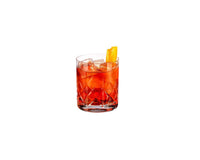Champagne is the Kleenex of sparkling wine. If that makes no sense, hopefully it will in a minute.
Sparkling wines (as opposed to still wines) are saturated with molecules of carbon dioxide gas, which makes them fizzy or bubbly. They’re made all over the world using a variety of grapes and production methods. Some well-known types include Prosecco from Italy, Cava from Spain, and the sparkling wines of California. And of course, Champagne. Champagne is a winemaking region in northern France. All sparkling wines made in Champagne are governed by strict regulations; only certain grapes and production processes are allowed.
What does any of this have to do with Kleenex? Kleenex is just one brand of facial tissue among many. But it’s the ur-brand—the original and most famous of its kind—and so its name has become synonymous with any and all facial tissue. Likewise, Champagne is such a historic and renowned type of sparkling wine that many people call any wine with bubbles “champagne” even though this is a misnomer.
Historically, this misnomer has been commonplace in the U.S. For decades—and despite the protestations of French trade authorities—many domestic producers of sparkling wine advertised using the term “champagne” or “American champagne.” Most have now stopped. But some, such as Korbel in Sonoma County, still market their wines as “California Champagne.”
That labor-intensive process goes by a few names, but the most commonly used today is the méthode traditionnelle, or traditional method. The traditional method involves two separate rounds of fermentation—one in a tank or barrel, and a second in the bottle itself. The in-bottle fermentation imbues the wine with its characteristically fine, persistent bubbles.
“In Champagne, the second in-bottle fermentation is followed by a minimum aging period of 15 months in contact with dead yeast cells,” explains Gérard Liger-Belair, a professor of chemistry and a sparkling-wine researcher at the University of Reims Champagne-Ardenne in France. “The yeasts release different compounds that modify the wine’s organoleptic properties, donating roundness and its characteristic aroma and flavor.” (There’s a lot more to the traditional method, but this covers the basics.)
Producers around the world use the traditional method to make fine sparkling wines. But each will have characteristics—flavor, texture, richness, depth—that are distinct. Liger-Belair says this is due to in large part to each place’s unique terroir, which refers to the soil, climate, and other place-specific elements that affect the qualities of its wines.
There’s a wider gap between Champagne and sparkling wines that are not made using the traditional method. While there are many different ways to make wine bubbly, by far the most common process—even more common than the traditional method—is known as the Charmat method or tank method. This process skips the months of in-bottle secondary fermentation in favor of a pre-bottling second round of fermentation in a large stainless-steel tank.
The Charmat method is much faster and less expensive than the traditional method. While it can produce delicious sparkling wines, they’re often a bit fruitier than Champagne and sparkling wines made in the traditional method. They also tend to have fewer, coarser, less persistent bubbles, Triffon says.
Prosecco is the king of this category. But there are many other examples, and most tend to be affordable—especially compared to Champagne.
Long story short, all Champagne is sparkling wine, but not all sparkling wine is Champagne.
Food & Wine Blog









